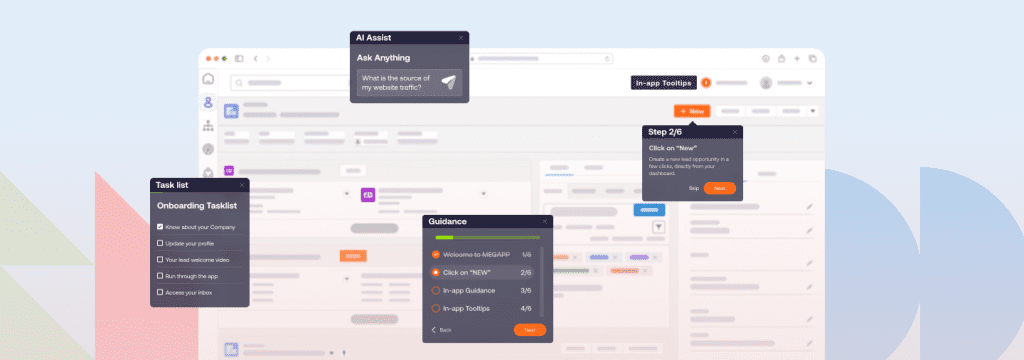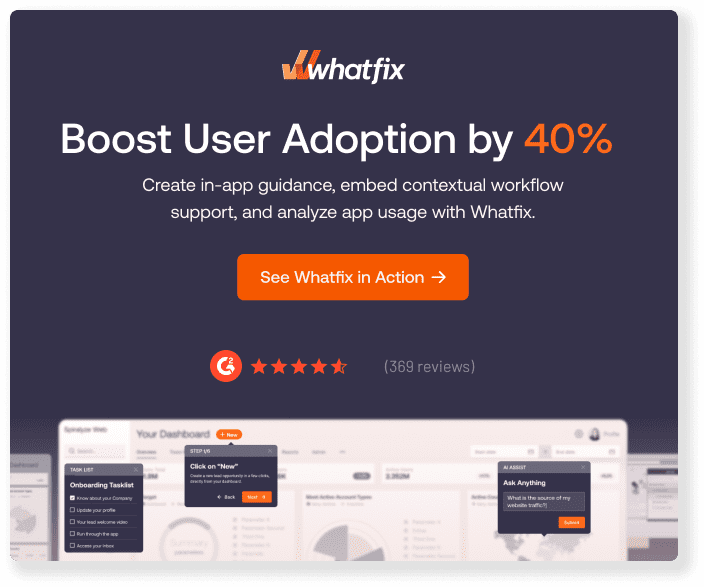Businesses depend on learning and development (L&D) teams to create effective employee training programs to help their workforce develop skills and knowledge while driving company-wide performance. This importance makes it vital for L&D teams to design effective and engaging activities that optimize knowledge apprehension.
Educators across academia and the professional world have sought systematic approaches to creating optimal instructional materials and programming for decades. When applied in the workplace, these instructional design frameworks provide the structure necessary to design, roll out, and evaluate training materials and learning experiences for continual optimization.
In this article, we explain the Dick and Carey model of instructional design and compare it to other popular models. We also explain some of the core benefits and challenges associated with this instructional design approach and provide informative examples to help you better understand how the Dick and Carey model can be put into practice.
What Is the Dick and Carey Design Model?
The Dick and Carey Design Model is an approach to instructional design, which provides a step-by-step process for constructing, implementing, and improving learning initiatives. Also called the Systems Approach model, the Dick and Carey model of instructional design was first described in The Systematic Design of Instruction, published in 1978 by educational researchers and academics, Walter Dick and Lou Carey.
The Dick and Carey model provides a roadmap for instructional designers to develop structured educational programming that accomplishes a set instructional goal. It frames the instructional design process as an inter-working system of elements, including the instructor, learners, educational materials, the delivery system, and the learning process itself. The process has nine steps, starting with the identification of instructional goals and ending with the development of a summative program evaluation.
Dick and Carey vs Other Instructional Design Models
The Dick & Carey model involves a systems approach to instructional design, which breaks down the larger design process into constituent parts. Compared to other instructional design models, the systems approach caters more directly to the learner’s needs and circumstances and incorporates purposeful revision rather than linear improvement.
Below, we will explain how the Dick and Carey approach compares to the widely-used models like ADDIE, SAM, and Rapid Prototyping:
Dick and Carey vs. ADDIE
The ADDIE model is another popular instructional design approach, comprised of five stages: Analysis, Design, Development, Implementation, and Evaluation.
- Analyze: take inventory of current access, audience, instruction methods, and resources
- Design: set objectives, determine big-picture strategy, establish measures
- Develop: Create resources/test them,
- Implement: logistics, train facilitators, deliver content
- Evaluate: develop processes to evaluate the whole process throughout execution, and post-implementation. Consider lessons learned and perform project review.
The Dick and Carey model is similar in premise but breaks many of these stages down into more detailed ones. For instance, in the Dick and Carey model, ADDIE’s Analyze stage is separated into three stages: identifying goals, conducting instructional analysis, and analyzing learners. This additional detail and structure makes the Dick and Carey valuable model for complex or unique learning projects, or for those that need additional focus on learner needs or circumstances.
| D&C | ADDIE |
| 9 steps | 5 steps |
| Developed by academics | Developed by the US Army |
| Focus on learner needs & circumstances | Focus on implementation |
| More detailed | Covers the essentials |
Dick and Carey vs. SAM (Successive Approximation Model)
The Successive Approximation Model of instructional design is all about rapid program development and adaptation rather than long-term, detailed design and improvement. This approach encourages frequent feedback and adjustments, with the understanding that each prototype is an approximation of an eventual, optimized final solution.
This model is made up of three phases that can be broken down further if necessary:
- Prep: background and information gathering
- Iterative design: design, prototyping, and reviewing instructional programming and materials
- Development: Implementation, evaluation, and adaptation of the prototype
| D&C | SAM |
| 9 stages | 3 phases |
| Rigid structure | Flexible improvement |
| No prototyping | Rapid feedback & adjustment |
| Handled by instructional designers | Collaborative approach |
Dick and Carey vs. Rapid Prototyping
Rapid prototyping is another iterative approach to instruction development strategy in which designers create a preliminary course design that they intend to test and revise from the earliest stages of the design process.
This agile instruction development strategy turns instructional design into a tightly cyclical, or spiral model in which working models are continually tested and revised, rather than being evaluated at the end of a longer progression of design stages. The stages of rapid prototyping are as follows:
- Define the goal or concept of your final product
- Implement a rough or skeletal version
- Collect feedback and refine the prototype
- Implement the refined prototype
- Collect feedback and refine the prototype
- Repeat
| D&C | Rapid Prototyping |
| Structured and systematic | Flexible and fast-paced |
| Curvilinear model | Spiral model |
| In-depth development before implementation | Implementation of rough concepts |
When compared to other popular instructional design models, the Dick and Carey approach is a thorough and systematic method for developing educational programs with the goal of continuous improvement.
How Does the Dick and Carey Systems Approach Work?
As mentioned, the Dick and Carey instructional design model is a rigidly structured, nine-step approach to instructional design. The added detail in this process is focused on the initial stages of development: goal identification and instructional analysis.
Here are the nine steps that make up the Dick and Carey approach to instructional design:
Identify instructional goals
The Systems Approach begins with establishing goals for the overall learning program. This stage prompts program creators to draw from organizational goals, department needs, and industry trends to develop a clear purpose for the program.
Here, instructional designers ask themselves, “What skills and information will the learners gain?”
Conduct instructional analysis
Upon establishing instructional goals, instructional developers can begin identifying the skills and information that will be included in the learning program. This involves identifying certain learning domains associated with each instructional goal, or determining whether each goal is related to developing a physical skill, a certain attitude, or a level of cognitive understanding.
This often requires instructional designers to conduct interviews and surveys to break goals down into contributing steps or components. For example, one conclusion reached during this step might be that, “Participants will learn to balance a resident ledger by learning how to do so in particular software and practicing this task on mock ledgers before making changes to live data.”
Analyze learners and context
This final analysis stage prompts instructional designers to understand learners, allowing designers to create engaging programs. Here, program developers identify the starting behaviors, attitudes, knowledge, and skills of individuals engaging with the program to be developed. Some details to be analyzed during this stage include learning preferences and motivations and existing proficiency and knowledge.
Instructional designers can access information about this learner context by tapping into performance reviews and data, communicating with managers, and conducting preliminary interviews with potential learners to assess their motivations, sentiments, and self-assessments. This step can happen simultaneously with instructional analysis to provide a contextual foundation for all subsequent programming decisions.
Write performance objectives
Here, instructional designers use information compiled from their analyses to create performance objectives for learners who engage with the program that will be developed. These objectives lay out what learners should accomplish by the time they complete each instruction unit.
These performance objectives should explicitly address three key aspects of performance:
- Behavior: the skills and knowledge to be acquired
- Conditions: The context within which new skills and knowledge will be applied
- Criteria: Specific descriptions of proficiency measures that will be applied to learning outcomes
Develop assessment instruments
At this point, course developers establish how learner progress will be evaluated throughout the program. Instructional designers choose different types of assessments based on how they align with objectives. As you might have noticed, this step happens before course content creation. This allows educational content developers to create content that includes only the most relevant and vital information, and avoid overloading learners as they engage with the program.
Develop instructional strategy
At this stage, instructional designers develop a strategy to guide content development and teaching methods. This can include establishing particular learning models or instructional theories for the larger program and assigning specific delivery methods or learning activities for different lessons. This might mean planning lectures and group discussions to accompany certain lessons, and self-guided eLearning for others.
Once again, this stage focuses on learner needs and ensures that designers develop programs that optimize instructional strategy to match the overall program objectives and learner motivations.
Develop and select instructional materials
The next stage of the Systems Approach is to select instructional materials and develop learning content. This step is the most active stage of program development and can be both time- and resource-heavy.
During this stage, instructional designers create educational content to match all the analyses already completed and ensure they align with established performance goals. Examples of educational materials include eLearning lessons and activities, workbooks, knowledge bases, and step-by-step instructions.
Design and conduct formative evaluation
Once the learning program has been developed, designers create an evaluation that can be conducted as the learning activities happen. This allows designers to evaluate various aspects of the program rather than focusing on its overall effectiveness. This step may occur along with full or partial program implementation.
Formative evaluation can be conducted in many ways, including learner observation, record analysis, learner interviews, and self-assessments. This step allows designers to keep the focus on learner experience as they continue to refine programming.
Design and conduct a summative evaluation
This final step in the Dick and Carey process requires instructional designers to develop a formal evaluation to gauge the effectiveness of the new program plan. This evaluation should include benchmarks and key performance indicators to be tracked from the moment of implementation, so L&D teams can monitor program effectiveness and revise program details as necessary.
Benefits of the Dick and Carey Systems Approach
The systems approach provides a thorough and structured process to guide instructional designers through program development. This systematic approach to creating educational programming has many benefits that contribute to long-term organizational success and individual learner growth.
Systematic and structured process
The systematic nature of the Dick and Carey approach makes it more feasible for L&D teams to tackle program development as a collaborative effort. The many steps and stages associated with this model make it easier for team leaders to delegate tasks and pinpoint areas for improvement throughout the design process. This helps instructional designers create more effective, learner-focused training programs to maximize learning outcomes.
Measurable outcomes
The structured program development framework helps teams establish concrete benchmarks and expectations for learners and instructors from early in the process. This ensures that programs are free of redundant and unnecessary information and tasks. This aspect of the Dick and Carey model is crucial for accurate measurement of training outcomes and continual improvement of all L&D activities.
Data-driven decision making
The benchmarks and instructional strategies established in the Systems Approach can be funneled directly into data analytics tools to provide ongoing insights into the program’s effectiveness. These measurements provide more objective data on which instructional designers can base decisions as they develop and adapt training programs. This priority on data-driven decisions ensures that learning programs are hyper-effective upon implementation and that any future adaptations are based on measurable performance data.
Flexibility and adaptability
Despite being one of the most structured and systematic models of instructional design, the Dick and Carey model is also geared toward adaptability and continual improvement. Because the Systems Approach focuses on analysis, development, and evaluation before implementation, the overall program can be fine-tuned, and the different stages can be returned to at various points in the process. This approach also prioritizes learner needs and prompts designers to include robust program evaluations so updates and changes can be made for continual improvement.
Challenges of the Dick and Carey Model
The Dick and Carey model is intensive and requires more planning, work, and resources than many other instructional design models. This thoroughness presents challenges along with benefits, making it a more appropriate approach for some projects over others. Here are some of the most commonly faced challenges:
Time-intensive
The level of detail involved in the Dick and Carey approach requires a great deal of the L&D team’s time, which can be limited, especially for teams that are part of growing organizations. The many stages of analysis, instructional design, and establishing evaluations can burden L&D team members if not handled carefully.
L&D leaders can overcome this challenge by delegating tasks associated with different stages to different employees or subsets of the larger team. By splitting up the work associated with this process, teams can speed up project implementation and ensure the entire L&D team is invested in program success.
Resource-heavy
This in-depth approach can also be burdensome in terms of other types of resources. For instance, data and software associated with analysis and content development can be financially costly and create new training needs to be addressed. This model also requires L&D teams to secure buy-in from stakeholders, and a commitment to continual improvement, which can be difficult in organizations focused on short-term results.
L&D leaders can alleviate these resource burdens by tapping into resources available in the organization’s existing tech stack or by implementing a comprehensive software solution that can handle L&D needs from analysis to course creation to learner assessments to program evaluation.
Complex for small-scale projects
While the thoroughness of the Dick and Carey model is ideal for many workplace training projects, it may be overkill in specific contexts. For instance, the Systems Approach might be optional for existing programs requiring only minor changes or small-scale or straightforward projects.
L&D Leaders can avoid burning out team members with unnecessary work by using different instructional design models, like Rapid Prototyping for smaller-scale or lower-impact projects.
Dick and Carey Design Model Examples & Use Cases
Formal employee training and upskilling
The Dick and Carey design model can be applied in the workplace to develop employee onboarding programs and upskilling training. This highly structured method of developing educational programming can help teams build robust training programs from scratch and deliver more effective training materials and activities.
For example, when a company implements a new warehouse inventory management system, L&D teams will be tasked with developing a comprehensive training program for new and existing employees. The in-depth analysis associated with the Systems Approach ensures instructional designers understand the needs of employees and goals associated with using the new software, ensuring training content is both relevant and engaging. This helps employees engage more closely with training materials and become proficient more quickly.
Formal higher education course
Since the onset of the COVID-19 pandemic, students have faced learning interruptions and changes to training content delivery methods on top of grief amid their most formative years. These circumstances have resulted in significant shifts in how students learn and their needs in the classroom.
The need to respond to these shifts is becoming increasingly apparent, requiring educators to adapt curricula and course requirements to meet student needs. This wide-spanning problem requires instructional designers to thoroughly investigate learner needs and topic contexts to design engaging training materials. Professors and higher education course designers can use the Dick & Carey method to guide redesigns of curricula and create more effective evaluation methods for continual improvement.
Informal learning activities
Many direct-to-consumer businesses rely on customer education to drive sales and improve customer satisfaction. For instance, a company that sells educational toys like microscope kits or rock tumblers for children might benefit from posting fun science content on YouTube demonstrating how children can use its products and how full-scale versions of those toys are used in STEM industries by adults.
Building a customer education initiative requires in-depth customer analysis to determine what topics customers would find interesting and the level of detail needed to keep viewers engaged. The Dick and Carey approach to instructional design would work well for this type of project because of its focus on learner context and continual improvement.
Contextual Learning Experiences Click Better With Whatfix.
Whatfix Digital Adoption Platform (DAP) facilitates instructional design by providing L&D teams with powerful user-behavior insights and easy-to-use content creation tools. Whatfix DAP lets teams develop in-app guides and self-help knowledge bases to improve onboarding and adoption for eLearners. Whatfix Analytics helps L&D teams understand program performance and adapt as learning contexts evolve.
Schedule a free demo to see how Whatfix can help your team create relevant, effective learning content and drive training ROI today.








